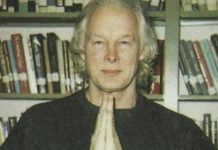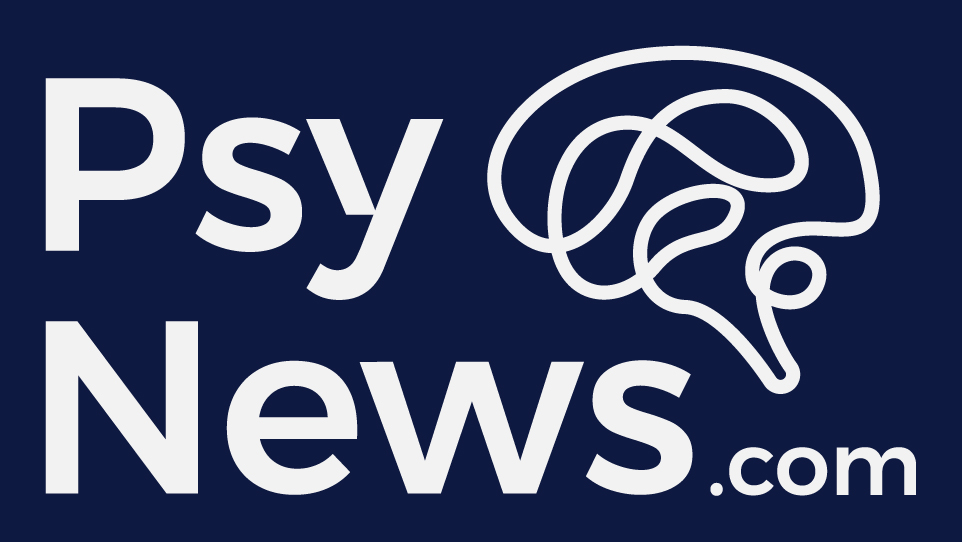
Patents play a critical role in drug development. They encourage and protect innovation. Likewise, drug patents help companies and investors recoup their substantial investments and the time commitments required to create novel drugs. To get a better idea of how a company goes about patenting a drug, it is paramount to understand the different types of patents one can apply for.
While there are three general categories a patent can fall into – utility, design, or plant – drug development deals with utility patents. Utility patents are the most common patents. According to the U.S. Patent and Trademark Office (USPTO), utility patents are “issued for the invention of a new and useful process, machine, manufacture, or composition of matter, or a new and useful improvement thereof.” In other words, if you have a new, useful, and non-obvious invention in your field, such as a new way to treat PTSD, you will likely look to file a utility patent.
Utility patents have five different groups of classification: a composition of matter, a process (or method), a manufacture, a machine, and an improvement of an existing idea. For this piece, we’ll only be looking at the first three categories, which are the application types that are typically used in the pharmaceutical industry.
Understanding the Role of Pharmaceutical Patents
One of the most important steps of bringing a new drug to market is patenting your technology. To understand why drug patents are so important, one first needs to familiarize themselves with what a patent is. According to the United States Patent and Trademark Office (USPTO), “a patent for an invention, is the grant of a property right to the inventor.” In other words, a patent is a type of intellectual property right, and once it is in place, it gives the owner the right to prevent others from copying the invention for a period of 20 years from the filing date.
There is a common misconception when discussing psychedelic patents – all companies are trying to patent natural psychedelics. The composition of psychedelic compounds in their natural form are not patentable. The drug already exists in nature and thus belongs to the public – one company cannot claim it as intellectual property to exclusively profit from it. Companies such as MagicMed Industries are focused on creating new molecules based on natural psychedelics to create an improved drug. These new, altered molecules are patentable and provide the necessary framework to create new and focused treatments for different neurological and psychological health conditions from their natural predecessors. MagicMed does not seek to patent what nature gave us. It only hopes to improve upon nature in order to improve the lives of patients in need.
The pharmaceutical industry has created numerous life changing drugs. Yes, in some cases these drugs have generated strong revenues due to a patent created monopoly, but the patent is what allows the treatment to be developed and reach the patients that need it. According to a 2020 Chemical & Engineering News article, 59 drugs were approved to helped patients in the U.S. in 2018, followed by 48 drugs in 2019. Without patents, competitors could easily duplicate the manufacturing of a drug and there would be no incentive for anyone to create these new treatments. To put it into lay man’s terms, people with diseases like cancer, epilepsy and arthritis would not have life changing treatments without patents. It would be impossible to complete the long regulatory process and attract the investment of hundreds of millions of dollars needed to move a drug through the development pipeline if someone can copy your product without doing any of the work. Patents prevent this problem and ensure innovative therapies reach patients.
Composition of Matter Patents
Composition of matter is the patent type used to protect a new or non-obvious chemical composition. The U.S. Supreme Court defines inventions that qualify for composition of matter patent as “all compositions of two or more substances and all composite articles, whether they be the results of chemical union, or of mechanical mixture, or whether they be gases, fluids, powders or solids, for example.”
A large part of qualifying for a composition of matter patent is proving your compound is truly unique in nature. For example, naturally existing substances would not be considered novel or non-obvious. This is one reason why the compound psilocybin cannot be patented – it already exists in nature. On the other hand, if a company were to alter the composition of psilocybin, the end result may be more likely to receive a composition of matter patent. A pharmaceutical compound that is novel (or new), non-obvious, and useful is an ideal patent candidate.
Composition of matter patents are the strongest, or most protecting, patents for a drug company to file. They can prevent anyone from selling your composition, including generic companies, and there is truly no way to get around these patents. A competitor would have to change the chemical composition of a product to avoid being sued for infringement, and at that point, the competitor is likely changing the medical properties of the drug anyways. It should be noted, however, that going the composition of matter route means taking the new molecule through the whole drug development process. As discussed below, other patent types do not necessarily require that, but they are weaker than composition of matter patents.
Method Patents
Another popular patent option in the pharmaceutical industry is the method patent. This patent is ideal if a pharma company is looking to patent the way or method that a product leads to accomplishing a desired result. For example, instead of patenting a psychedelic derivative that is believed to treat chronic headaches (a composition of matter patent), a company may try to patent how a psychedelic derivative is delivered in order to treat chronic headaches (a method-of-use patent).
However, the level of protection derived from method patents pales in comparison to those of composition of matter patents. All they do is prevent competitors from copying your method, or process, which is often not a challenge to work around. For example, if a psychedelic pharmaceutical company patents an innovative method for using a DMT-inspired molecule as an adjunct to psychotherapy, one can simply adjust the dosage or procedure protocols, and then they would not be infringing on that company’s intellectual property. Ultimately, method patents have the potential to shrink market share in the emerging psychedelic pharmaceutical business.
The following example illustrates how easy it is to get around a method patent: Company X patents a method to treat treatment-resistant depression using a psilocybin-derivative, and company Y patents a method to treat major depressive disorder using a psilocybin-derivative. Let’s say each method has a very unique dosing process. Well, since the psilocybin-derivative itself is not patent protected, a generic company can make and sell that drug. Furthermore, a doctor is then able to choose the cheaper generic version and prescribe it in whatever dosage they deem is appropriate, something referred to as “off label prescription”. In this scenario, both company X and Y didn’t gain much from their method patent.
Manufacture Patents
The last type of utility patent used in the pharmaceutical industry often is a method of manufacture patent. As the term implies, this patent seeks to protect a pharmaceutical company’s method of manufacturing drugs. Again, the patent does not protect the drug in question, just the way that it is produced.
Like a method to treat or method of use patent, a method of manufacture patent can be fairly simple to work around. If a company comes up with a brilliant way to make LSD at scale, what is stopping a competitor from tweaking a few things in that patented process so as to no longer be performing the exact, patented method, and thus benefit from using it themselves?
In the 1960s, Sandoz – a pharmaceutical company that employed the legendary psychedelic scientist Albert Hoffman – filed many patents regarding psilocybin, including a patent for its manufacture. Today, anyone can use this method to extract and sell psilocybin. While manufacturing patents have their place in the pharmaceutical industry, they are clearly not the strongest patents at the industry’s disposal.
Other Patent Considerations: Crystal Structures & Contaminants,
Patenting a compound via the composition of matter patent is quite difficult in comparison to the other aforementioned patent options a pharmaceutical company may utilize, but it is a much stronger strategy.
Since a composition of matter patent requires evidence that a compound is “truly unique in nature” – this excludes some of the most familiar prototypical psychedelic compounds from being patented, such as psilocybin. However, this by no means suggests that making a patent related or based on psilocybin is undoable. For example, MagicMed Industries has focused on making novel drugs inspired by naturally occurring compounds, such as psilocybin. Indeed, MagicMed’s signature psychedelic-derivative compounds yield all the benefits of a composition of matter patent, and competitors will not be able to simply “tweak” or “adjust” their way around this patent.
Patent strategies relying on different “formulations” or delivery methods will struggle with many of the same problems listed above. For example, patenting a certain useful combination of compounds is very difficult to get through the regulatory process. Usually the FDA wants a very clear, individual safety profile of one drug first. If companies hope to patent a drug delivery system (e.g., transdermal patch, tablet formula, IV-delivered dosing), they will ultimately join the price race to the bottom. These quick methods are a risk for companies in the long term because, as patents, they are not always overly challenging to get around and, as “novel ideas,” they can easily be challenged in the legal domain.
How MagicMed Is Utilizing A Unique & Effective Patent Strategy
MagicMed Industries’ Inc. recently publicized the psilocybin-based section of their derivative molecule patent portfolio – their “Psybrary ” – which illustrates how a robust IP strategy can be used to enhance the psychedelic pharmaceutical industry as a whole. This IP strategy includes composition of matter, method of use, and manufacturing process – which is the strongest combination of the aforementioned patent strategies.
” – which illustrates how a robust IP strategy can be used to enhance the psychedelic pharmaceutical industry as a whole. This IP strategy includes composition of matter, method of use, and manufacturing process – which is the strongest combination of the aforementioned patent strategies.
The companies that utilize this strong type of patent portfolio will ultimately be very successful in the nascent psychedelic pharmaceutical industry. On the other hand, patenting crystal structures, developing products that have existed for 60 years, making new methods, trying to extract new compounds from mushrooms etc. – none of these make strong, sustainable IP strategies. Companies taking those routes will struggle to recoup their time and investment. Generics companies and their competitors will eat up the market share and only the companies selling fully patented products at a reasonable price or marketing their products most effectively will be victorious.
Product development timelines in the pharmaceutical industry are inevitably long, and demand extremely high investments to sustain. A 2020 JAMA study estimated the median capitalized R&D cost per product was $985 million USD, and considering that drug development takes roughly 15 years to complete, companies are risking a lot monetarily by entering this new industry. Luckily, patents allow these companies to recoup their initial investments.
This is largely why the Psybrary will be profitable for companies partnering with MagicMed – they will be able to screen drugs that are already patented. This saves them time, and therefore money, which ultimately expedites products to the market. Furthermore, using a massive novel drug patent library ensures a level of innovation protection out the gate for companies looking to work with these life-saving products.
will be profitable for companies partnering with MagicMed – they will be able to screen drugs that are already patented. This saves them time, and therefore money, which ultimately expedites products to the market. Furthermore, using a massive novel drug patent library ensures a level of innovation protection out the gate for companies looking to work with these life-saving products.
In terms of IP strategy, MagicMed is pursuing protection for novel compounds inspired by naturally occurring psychedelic compounds. This innovative approach allows the company to build out from the existing first generation of famously known natural compounds, as well as improve upon their pharmacological profiles. This patent strategy puts the company at a major advantage. Unlike competitors pursuing IP surrounding use or manufacture of natural psychedelics, MagicMed can protect their novel molecules themselves and enjoy a 20-year monopoly on their manufacture and sale.
The success of the psychedelic medicine industry depends on the executions of robust patent strategies, and of the available patent strategies, companies are strongly encouraged to consider long-term goals. Composition of matter patents are the strongest protections for long term success and they mesh very well with method and manufacturing patents.
The post Understanding the Strengths & Weaknesses of Different Patent Types appeared first on Microdose Psychedelic Insights.









